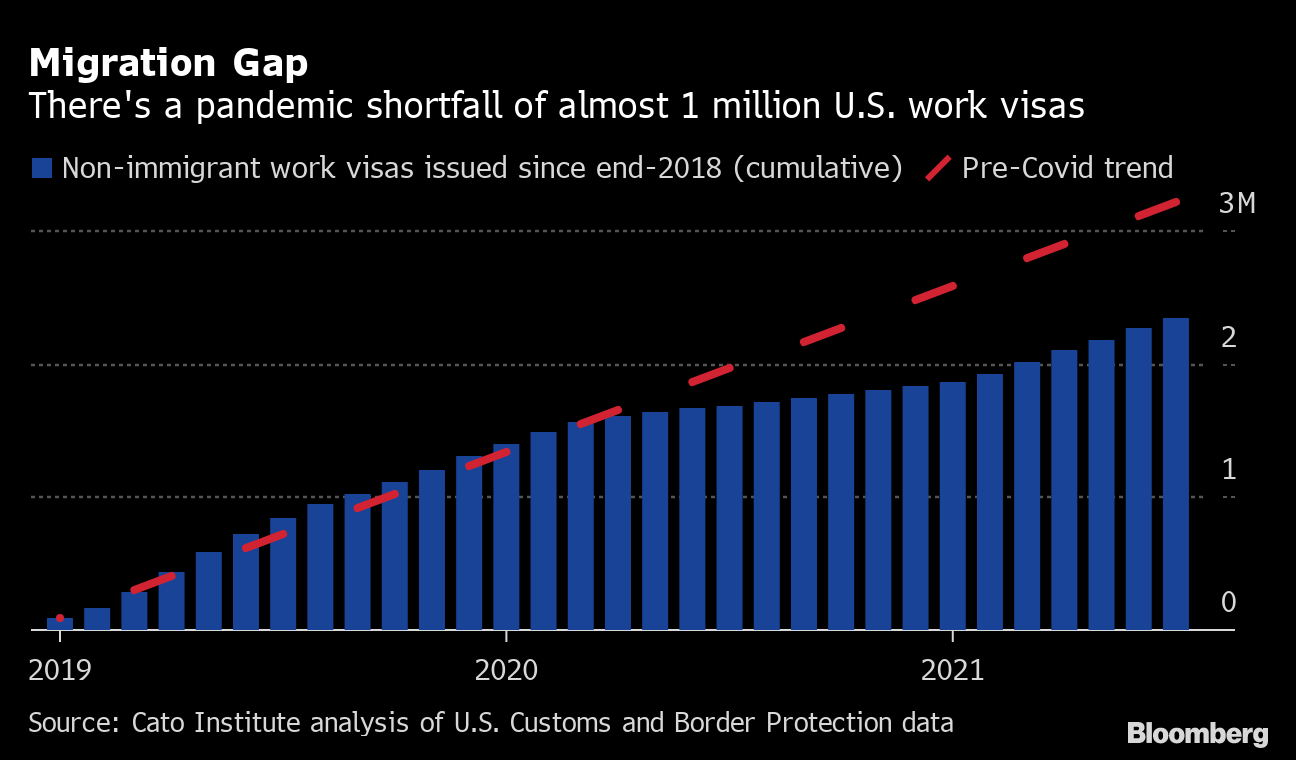Vidya Sethuraman
India Post News Service
Overall, in 2021, employers ended up adding an unprecedented 3.8 million jobs. But at the same time, millions of Americans have left the labor force since before the pandemic. In fact, we have more than three million fewer Americans participating in the labor force today compared to February of 2020. The U.S. Chamber surveyed unemployed workers who lost their jobs during the pandemic on what is keeping them from returning to work. Nearly one in three (33%) women indicated that the need to be home and care for children or other family members has made the return to work difficult or impossible. More than a quarter (28%) of men indicated their industry was still suffering and not enough good jobs were available to return to work.
As we approach Labor Day, a number of economists, demographers and other experts are sounding the alarm: the country needs immigrants -from meatpacking to home building to STEM professionals to nurses- to keep pace with the job-creating post-pandemic economy and long-term economic growth. While public discussion focuses on the estimated 2-million border crossings for the fiscal year not the same as 2 million people the economists are focusing on the fact that about 10 to 15% of job openings that typically employ immigrant or foreign-born workers, are still vacant.
And yet, the legal immigration system is in dire straits, there’s a monstrous backlog of green cards, generations of people are waiting for legalization, the asylum system is virtually paralyzed and there’s absolutely no appetite in Congress -mostly on one side- to ease restrictions for even the most popular of legal immigrants. Dreamers and STEM PhDs come to mind. Speakers at the EMS briefing on August 26 explained what’s at stake and why the policy stalemates on immigration can damage the economic recovery and long-term economic health of the USA.
Giovanni Peri, PhD. Professor of Economics at the University of California, Davis, said that immigration numbers have fallen off a cliff since the pandemic. Between mid-2019 and late 2021, the number of newcomers to the U.S. is nearly zero, he said. From late 2021 to early 2022, the number of immigrants will gradually rise. According to statistics, among the lost 1.7 million immigrants, about 900,000 are STEM science, technology, engineering, and mathematics students, and about 800,000 immigrants can be converted into labor in specific industries, including food, entertainment, nurses and other industries.
Perry said that these fields are precisely the industries with severe labor shortages, with a labor gap of about 14%. In addition, from 2020 to now, the United States will reduce about 400,000 international students every year. It is estimated that this equates to a reduction in the workforce of 150,000 per year.
Gregory Z. Chen, Esq. Senior Director of Government Relations, American Immigration The Lawyers Association said there was currently a backlog of cases for almost all immigration categories, such as political asylum immigrants taking an average of four to six years to complete. Greg Chen said that in order to change the status quo, one must push for legislation, approve more green card quotas, and limit the trial period of each case to the Immigration Bureau. It is necessary to put pressure on Congress to change the general environment of immigration policy.







